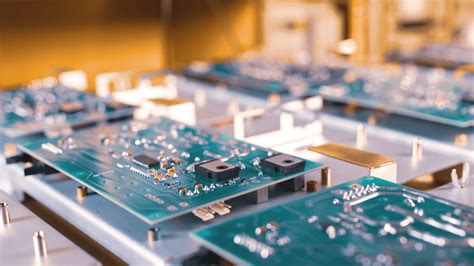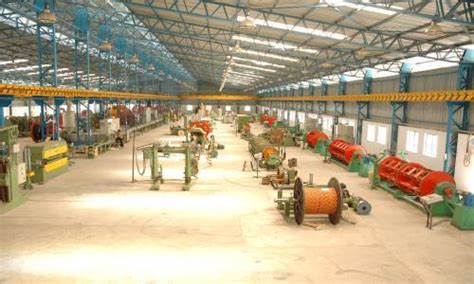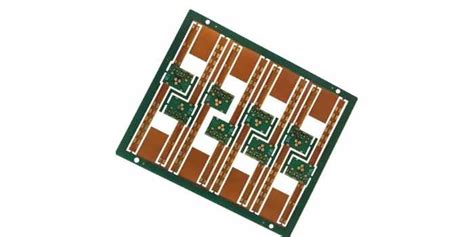Panasonic Megtron 6: Ultra-Low Loss Materials for HDI PCBs

Key Takeaways
When selecting materials for PCB manufacturing, understanding performance trade-offs becomes crucial. Panasonic Megtron 6 stands out with ultra-low dielectric loss (Df < 0.0015) and stable thermal stability up to 410°C, directly impacting PCB manufacturing cost by reducing signal attenuation and minimizing rework in high-frequency applications. For PCB manufacturing companies, this translates to improved yield rates in HDI PCB production, especially for 5G infrastructure or advanced wireless systems requiring tight impedance control.
Its low Dk/Df properties ensure consistent signal integrity across millimeter-wave frequencies, a critical factor for network equipment and IoT devices. Compliance with IPC standards further simplifies validation processes, reducing time-to-market for complex designs. By integrating Megtron 6 into your PCB manufacturing business, you gain access to materials that balance performance with scalability—key for meeting evolving demands in aerospace, automotive radar, or data center hardware.
For optimized workflows, consider sourcing verified materials to maintain consistency in multi-layer builds. This approach not only lowers long-term PCB manufacturing cost but also strengthens reliability in environments where heat resistance and signal fidelity are non-negotiable.
Ultra-Low Loss HDI PCB Solutions
When designing HDI PCBs for high-frequency applications, selecting materials with ultra-low signal loss becomes critical. Panasonic Megtron 6 addresses this need by offering exceptionally low dissipation factors (Df) and stable dielectric constants (Dk), ensuring minimal signal degradation even at millimeter-wave frequencies. For PCB manufacturing companies, this material’s performance translates to enhanced reliability in 5G infrastructure, network routers, and advanced wireless systems, where maintaining signal integrity is non-negotiable.
Tip: Always verify your material’s thermal stability and frequency response during the design phase to avoid costly revisions. Panasonic Megtron 6’s ability to withstand 410°C reflow temperatures simplifies PCB manufacturing processes while reducing risks of delamination or warping.
Balancing PCB manufacturing cost with performance demands can be challenging, but ultra-low-loss materials like Megtron 6 help optimize long-term value. Its compatibility with laser drilling and microvia formation supports intricate HDI PCB designs without compromising speed or efficiency. For businesses scaling their PCB manufacturing business, this material’s IPC-4103 compliance ensures adherence to industry standards, streamlining certification and fostering trust with clients in telecom and aerospace sectors.
By integrating Megtron 6 into your designs, you not future-proof your products against evolving bandwidth requirements but also reduce insertion losses in high-speed channels. This makes it easier to achieve tighter impedance control, a necessity for next-gen networking equipment and millimeter-wave applications.
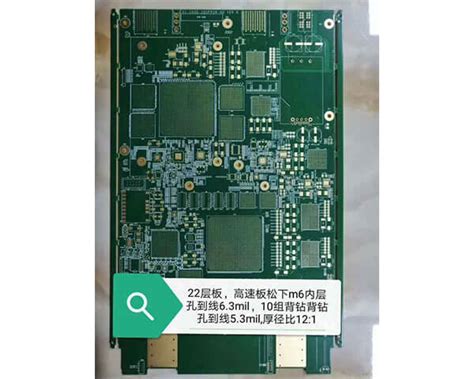
MEGTRON 6 Thermal Stability Explained
Thermal stability becomes critical when designing high-density interconnect (HDI) PCBs for demanding applications. Panasonic’s Megtron 6 addresses this challenge with a glass transition temperature (Tg) exceeding 180°C and sustained performance at up to 410°C, ensuring minimal material degradation under extreme operating conditions. For PCB manufacturing companies, this translates to reliable multilayer board fabrication without warping or delamination—common pain points in high-heat environments like 5G base stations or automotive systems.
Balancing PCB manufacturing cost and performance requires materials that minimize rework. Megtron 6’s low thermal expansion coefficient (CTE) reduces stress on copper traces during rapid temperature cycles, lowering the risk of micro-cracks. This durability directly impacts your PCB manufacturing business by extending product lifespans and reducing warranty claims. Additionally, its compatibility with lead-free soldering processes simplifies assembly workflows, further cutting production expenses.
When selecting materials for heat-resistant HDI designs, prioritize solutions like Megtron 6 that align with industry standards while optimizing thermal management. Its stability ensures consistent signal integrity even in compact layouts, making it indispensable for applications where heat and reliability intersect.
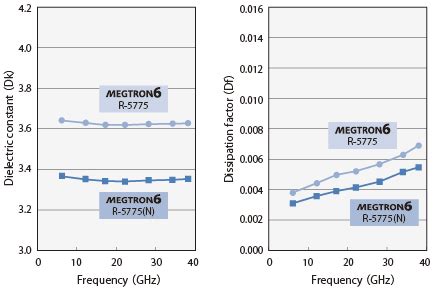
High-Speed Materials for 5G Networks
As 5G networks demand faster signal transmission and reduced latency, selecting the right materials becomes critical for PCB manufacturing companies. Panasonic Megtron 6 addresses these needs with its ultra-low loss properties, enabling high-speed performance essential for millimeter-wave frequencies. Its low dielectric constant (Dk) and dissipation factor (Df) minimize signal distortion, ensuring reliable data transfer in advanced wireless systems.
When optimizing PCB manufacturing cost, material stability under extreme conditions is non-negotiable. Megtron 6’s ability to maintain consistent electrical properties at temperatures up to 410°C ensures longevity in high-power 5G infrastructure. This thermal resilience not only reduces maintenance expenses but also supports complex HDI designs required for compact network equipment.
For PCB manufacturing businesses targeting 5G applications, integrating Megtron 6 into your designs enhances signal integrity while complying with stringent IPC standards. Its compatibility with high-density interconnects (HDI) allows for finer traces and tighter spacing, crucial for next-generation base stations and RF modules. By prioritizing low-loss materials like Megtron 6, you can future-proof your products against evolving PCB manufacturing demands while balancing performance and scalability.
IPC Compliance in PCB Manufacturing
When selecting materials for PCB manufacturing, adherence to IPC standards ensures reliability across critical applications like 5G infrastructure and wireless systems. Panasonic Megtron 6’s ultra-low loss properties align with IPC-4103/126 specifications, providing a foundation for PCB manufacturing companies to meet stringent performance benchmarks. Its 410°C thermal stability minimizes delamination risks during high-temperature assembly processes, directly influencing PCB manufacturing cost by reducing rework and material waste.
For high-density designs, consistent dielectric constants (Dk < 3.7) and dissipation factors (Df < 0.0015) ensure signal integrity, which is non-negotiable in IPC Class 3 designs. This becomes particularly important when balancing PCB manufacturing business priorities—such as yield optimization—with the demand for high-frequency performance. By integrating Megtron 6, manufacturers can streamline compliance workflows while addressing challenges like impedance control and layer-to-layer registration.
Moreover, IPC-certified materials mitigate long-term risks, such as signal degradation in network equipment or thermal stress in HDI applications. For industries requiring mission-critical reliability, this alignment between material properties and manufacturing standards becomes a strategic advantage, ensuring both technical and commercial viability.
Low Dk/Df Properties for Wireless Tech
When designing circuits for high-frequency wireless applications, controlling dielectric constant (Dk) and dissipation factor (Df) becomes critical to maintaining signal integrity. Panasonic Megtron 6 addresses this challenge with its ultra-low Dk/Df properties, enabling stable performance in 5G, IoT, and millimeter-wave systems. With a Dk value as low as 3.7 at 10 GHz and a Df below 0.0015, this material minimizes signal loss and phase distortion, ensuring reliable data transmission even in densely packed HDI PCB designs.
For PCB manufacturing companies, optimizing these properties directly impacts PCB manufacturing cost and product reliability. Lower Df reduces energy dissipation, allowing thinner traces and tighter spacing without compromising performance—key for compact wireless devices. Additionally, the material’s thermal stability at 410°C ensures compatibility with lead-free soldering processes, a non-negotiable requirement in modern PCB manufacturing business workflows.
By integrating Megtron 6 into your designs, you gain a competitive edge in producing high-frequency boards that meet stringent industry standards. Whether you’re developing RF modules or antenna arrays, leveraging its low-loss characteristics helps balance performance demands with PCB manufacturing scalability, making it a strategic choice for next-gen wireless infrastructure.
Optimizing Network Equipment With MEGTRON 6
When designing high-performance network infrastructure, minimizing signal loss while maintaining thermal resilience becomes critical. PCB manufacturing companies increasingly rely on Panasonic MEGTRON 6 to address these challenges, as its ultra-low dielectric properties (Dk of 3.7 and Df of 0.0015 at 10 GHz*) ensure stable signal integrity across high-frequency applications like 5G base stations and data routers. By integrating this material, you reduce the risk of latency spikes caused by impedance mismatches—a common pain point in densely packed network equipment.
The material’s thermal stability (up to 410°C) simplifies designs for heat-intensive environments, allowing PCB manufacturing workflows to avoid costly heat dissipation add-ons. This directly impacts PCB manufacturing cost, as fewer auxiliary components are needed to meet thermal performance standards. For example:
| Design Factor | Traditional Materials | MEGTRON 6 |
|---|---|---|
| Thermal Resistance | Requires heatsinks | Built-in stability |
| Signal Loss at 28 GHz | ≥0.0035 dB/cm | ≤0.0022 dB/cm |
| Layer Count Efficiency | 12-16 layers | 8-12 layers |
Such efficiency not only streamlines production but also supports miniaturization trends in PCB manufacturing business strategies. By leveraging MEGTRON 6’s low-loss characteristics, you enable faster data transmission in switches and servers while adhering to strict IPC-4103 standards—a non-negotiable for reliability in mission-critical networks.
Transitioning to this material requires collaboration with suppliers specializing in high-frequency laminates, but the long-term gains in performance and cost predictability justify the shift. Whether upgrading existing infrastructure or developing next-gen systems, MEGTRON 6 ensures your network equipment operates at the frontier of speed and durability.
Heat-Resistant PCBs for HDI Applications
When designing high-density interconnect (HDI) PCBs for applications like 5G infrastructure or advanced networking equipment, thermal resilience becomes critical. PCB manufacturing companies prioritize materials like Panasonic Megtron 6 because its 410°C thermal stability ensures reliable performance even under prolonged high-temperature operation. This is particularly vital for HDI designs, where tightly packed traces and microvias demand materials that resist warping or delamination during reflow soldering or thermal cycling.
Balancing PCB manufacturing cost with performance requires materials that maintain low dielectric loss (Df) while offering exceptional heat resistance. Megtron 6’s glass transition temperature (Tg) of 180°C and low coefficient of thermal expansion (CTE) minimize stress on copper layers, reducing the risk of microcracks in high-layer-count boards. For PCB manufacturing business models focused on high-reliability sectors, such as aerospace or automotive electronics, these properties translate to fewer field failures and lower long-term maintenance expenses.
Moreover, the material’s thermal endurance supports laser drilling and sequential lamination processes essential for HDI fabrication. By integrating heat-resistant substrates early in the design phase, you can avoid costly redesigns and ensure compliance with stringent IPC-4101 standards. Whether you’re optimizing PCB manufacturing workflows or scaling production for next-gen wireless systems, thermal management remains a cornerstone of HDI success.
Advanced Wireless Circuit Design Strategies
When designing wireless circuits for high-frequency applications, material selection directly impacts signal integrity and thermal management. PCB manufacturing relies on substrates like Panasonic Megtron 6 to achieve ultra-low dielectric loss (Df) and stable permittivity (Dk), critical for minimizing signal attenuation in 5G and millimeter-wave systems. For PCB manufacturing companies, balancing PCB manufacturing cost with performance demands becomes easier when using materials that combine high-speed capabilities with exceptional thermal stability (410°C).
To optimize designs, prioritize layered stack-ups that reduce crosstalk while maintaining impedance control—this is where Megtron 6’s low Dk/Df properties excel. Its compatibility with HDI processes allows finer traces and microvias, essential for compact, high-density layouts in advanced wireless modules. For PCB manufacturing business models targeting networking or IoT devices, this translates to fewer retries during prototyping and improved yield rates.
Transitioning from traditional FR-4 to advanced laminates requires collaboration with suppliers to ensure IPC compliance and material consistency. By integrating Megtron 6 early in the design phase, you avoid costly post-production fixes, ensuring your wireless systems meet both performance benchmarks and scalability requirements.
Conclusion
When selecting materials for high-density interconnect applications, PCB manufacturing companies must balance performance requirements with PCB manufacturing cost considerations. Panasonic Megtron 6 emerges as a strategic choice, offering ultra-low signal loss and thermal stability up to 410°C—critical for maintaining reliability in 5G infrastructure and advanced wireless systems. Its low Dk/Df properties ensure minimal signal distortion, enabling cleaner data transmission in high-frequency environments. For businesses scaling their PCB manufacturing business, integrating Megtron 6 can enhance product longevity while meeting stringent IPC compliance standards, reducing risks of field failures.
By prioritizing materials like Megtron 6, you not future-proof designs for next-gen networking equipment but also streamline production workflows. Its heat-resistant characteristics minimize warping during assembly, lowering rework rates and optimizing PCB manufacturing efficiency. Whether deploying in millimeter-wave applications or dense server architectures, leveraging this advanced substrate ensures your designs stay competitive in markets demanding both speed and durability. The result? A robust foundation for innovation without compromising on cost or performance.
FAQs
How does Panasonic Megtron 6 improve performance in high-frequency applications?
Megtron 6’s ultra-low dielectric loss (Df ≤ 0.0015) minimizes signal distortion, making it ideal for PCB manufacturing of 5G infrastructure and advanced wireless systems. Its stable Dk/Df properties ensure consistent performance even under extreme conditions.
Why is thermal stability critical for HDI PCBs in networking equipment?
With a glass transition temperature (Tg) of 210°C and thermal resistance up to 410°C, Megtron 6 prevents delamination during high-temperature assembly processes. This reliability reduces long-term PCB manufacturing cost by minimizing field failures.
How do PCB manufacturing companies ensure IPC compliance with Megtron 6?
Reputable PCB manufacturing companies adhere to IPC-4101/126 standards for material certification. Megtron 6’s consistent quality simplifies compliance, ensuring compatibility with automated assembly lines and reducing rework risks.
What factors influence PCB manufacturing cost when using Megtron 6?
While raw material costs are higher than standard FR-4, Megtron 6’s low signal loss reduces the need for additional shielding layers. This optimization lowers overall PCB manufacturing business expenses, especially for high-layer-count designs.
Can Megtron 6 be used in mixed-signal automotive applications?
Yes. Its low noise characteristics and thermal resilience make it suitable for advanced driver-assistance systems (ADAS), where signal integrity and durability are critical.
Ready to Optimize Your Next Project?
For tailored solutions in PCB manufacturing with Panasonic Megtron 6, please click here to connect with experts who specialize in high-performance materials.




